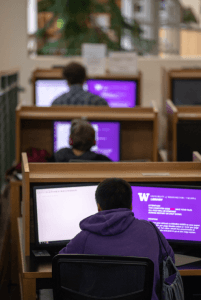
A recent New York Times article caught my attention: “Hoaxers Slip Brestaurants and Dog-Park Sex Into Journals”, the title reads.
What struck me, however, was not the provocative title, but rather the hoax itself. By getting a fake article published in a peer-reviewed journal, the hoaxters were purposefully showing that the cycle of fact-checking and credibility that is at the core of the tenure process for faculty in higher education is flawed.
In the age of fake news, this speaks to a crisis of information evaluation. Harvard political scientist Yascha Monk — cited in the article — comments on precisely this danger, that journals (and people) can not “distinguish between serious scholarship and a ridiculous intellectual hoax”.
As librarians, we go into classrooms to teach students across all disciplines (in 2017-2018, UW Tacoma Librarians taught over 180 classes on campus!). Our purview is not just books or journal articles: we are specialists in information. We focus on information literacy, teaching students how to evaluate information. Some of this work underscores form — how to distinguish popular press from gray literature to a primary source. We understand that becoming information literate is a process that is iterative, learned over time.
However, this recent New York Times article is a stringent reminder that educators in higher ed, including librarians, need to continue to stress content and critical analysis of texts as well. This, too, is an iterative process, one in which the learner becomes empowered to evaluate information.